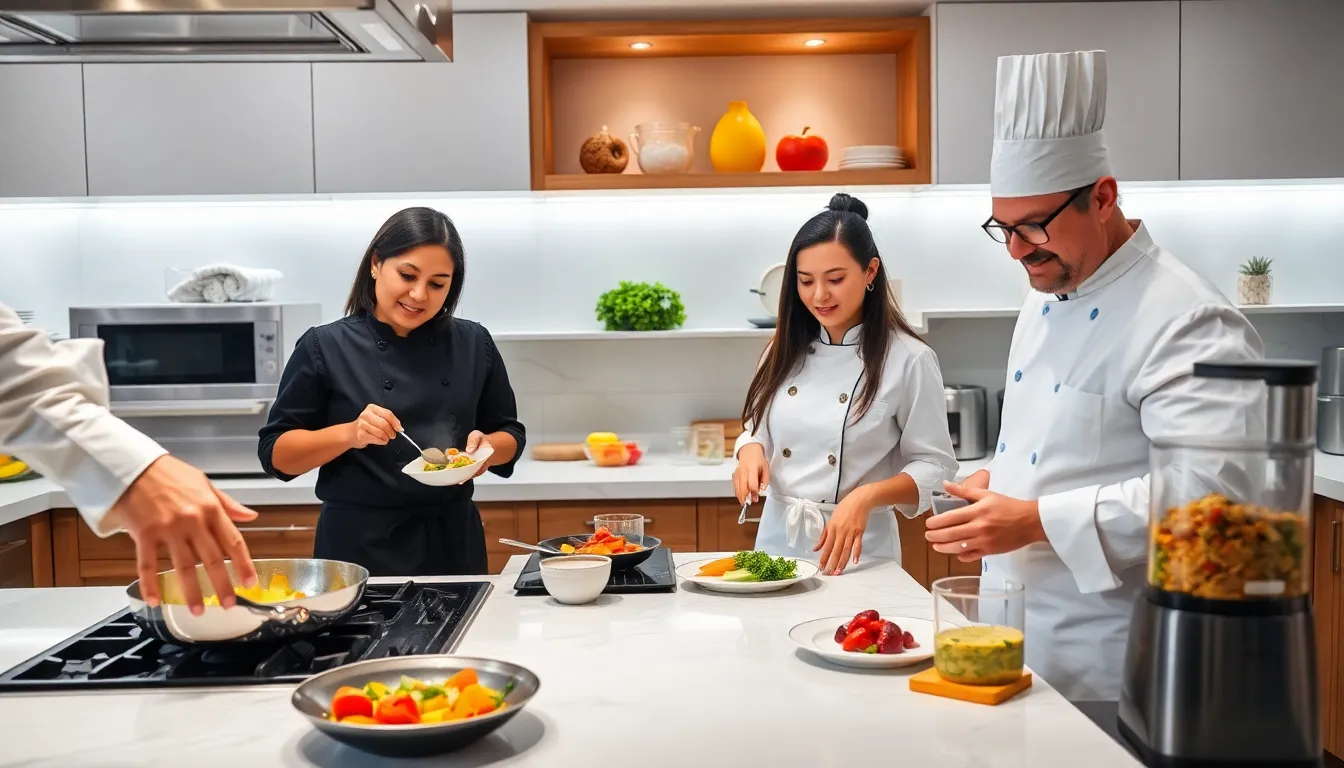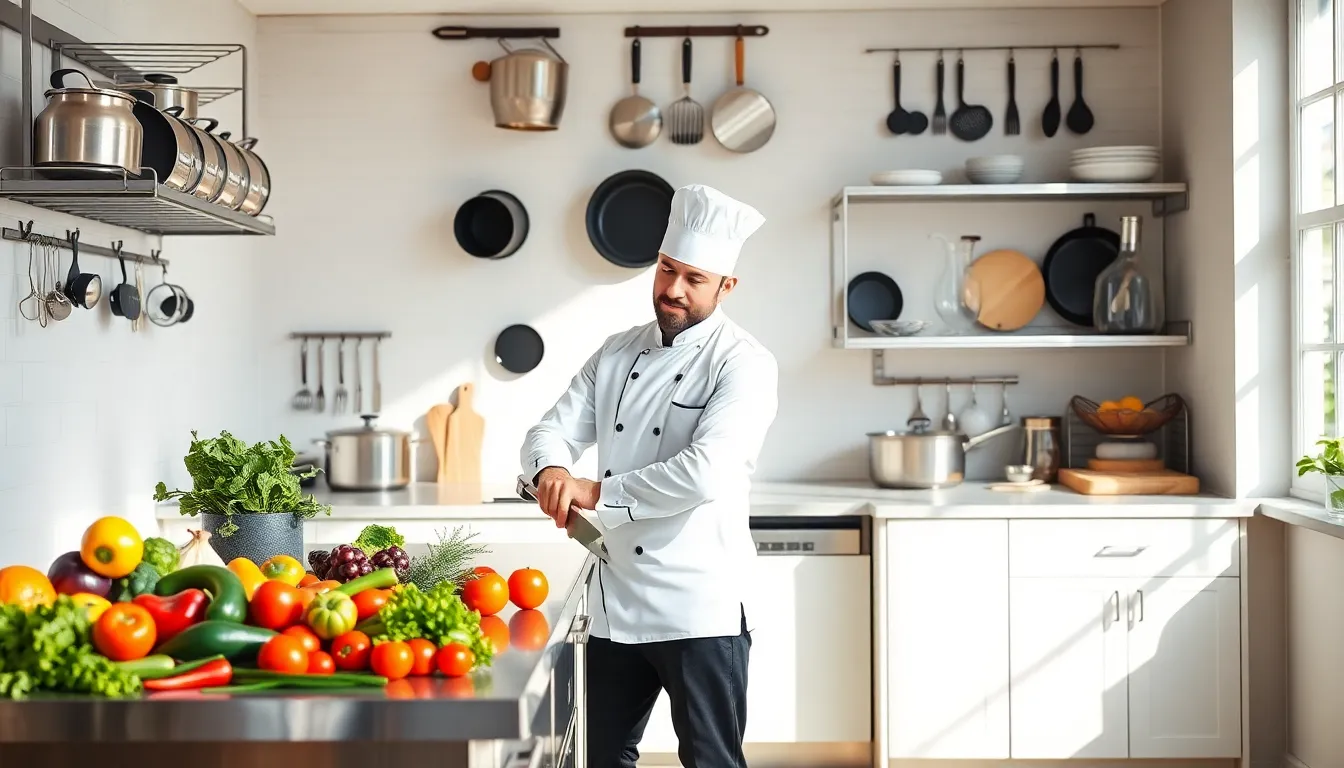In the bustling world of culinary arts, knowing how to cook is just the iceberg’s tip. What lies beneath? An expansive ocean of cooking techniques waiting to be explored. Think of cooking techniques as the superhero sidekicks of your kitchen adventures. Whether you’re searing a steak or delicately poaching an egg, these methods can elevate your dishes from mundane to mouthwatering. So, prepare your aprons because we’re diving headfirst into the essentials of cooking techniques. Trust us, your taste buds will thank you.
Table of Contents
ToggleUnderstanding Cooking Techniques

Cooking techniques are fundamental practices that dictate how food is transformed from raw ingredients into delicious meals. Mastering these techniques not only enhances flavor but also affects texture and overall presentation. At its core, cooking is a science and an art blending together to create something magical. Whether a novice trying to impress at a cooking party or a seasoned chef wanting to perfect a dish, a solid grasp of various cooking methods is crucial.
Each technique has its unique purpose and application, helping cooks achieve desired flavors and characteristics in their food. By understanding the underlying principles behind these techniques, culinary enthusiasts can adapt and innovate, making the kitchen a playground for creativity.
Types of Cooking Techniques
Cooking techniques can broadly be categorized into three main types, each suited to different purposes:
Dry Heat Cooking Methods
These techniques use hot air or a direct flame to cook food without moisture. Grilling and roasting fall into this category. The intense heat caramelizes sugars, infusing stuff like vegetables and meats with that sought-after depth of flavor. Baking is another popular dry heat method, often used to create lovely desserts and breads.
Moist Heat Cooking Methods
Moist heat methods use water or steam for cooking, making them perfect for delicate items. Techniques like boiling, poaching, and steaming allow for a gentler approach, preserving nutrients and flavors. This method is particularly useful for cooking vegetables and seafood, think vibrant veggies or perfectly tender fish.
Combination Cooking Methods
A hybrid approach, combination methods use both dry and moist heat. Some favorites include braising and stewing, which start with searing or browning food before adding liquid. This interplay creates layers of flavor, offering richness that can’t be matched by other methods.
Cooking Techniques by Food Types
Different ingredients sometimes require specialized techniques.
Vegetable Cooking Techniques
Veggies are versatile and can be prepared in numerous ways, stir-frying, grilling, and roasting lead the charge. Stir-frying quickly cooks vegetables over high heat in a small amount of oil, retaining their crunch and vibrant colors. Roasting, meanwhile, develops a savory sweetness, making vegetables like carrots and Brussels sprouts shine.
Meat Cooking Techniques
Meats demand particular attention: think marinating before grilling to enhance flavor. Techniques such as braising are fantastic for tougher cuts, breaking down the fibrous texture while keeping it moist. Searing, a quick method to lock in moisture, is essential for tender cuts, providing that golden crust everyone loves.
Seafood Cooking Techniques
Cooking seafood can be as delicate as the ingredient itself. Techniques like poaching keep the fish succulent, while grilling adds a beautiful char. Also, if moisture is paramount, steaming seafood preserves flavors without additional fats, ensuring they remain flavorful and healthy.
Baking and Pastry Techniques
Baking transcends mere cooking: it’s a fine art that requires precision. The delicate balance of ingredients and technique appreciates sweet and savory creations alike, think cookies, cakes, or pastries.
Understanding principles such as mixing, folding, and kneading dough is vital. Kneading develops gluten, providing structure to bread, while folding allows air to be incorporated gently, perfect for light and fluffy soufflés. And, let’s not forget about temperature control: the wrong oven temperature can ruin a masterpiece.
Essential Tools for Cooking Techniques
Equipping your kitchen is essential for maximizing your cooking techniques. Here are a few must-have tools:
- Knives – A good set of knives can alter the landscape of meal preparation. From paring to chef’s knives, each serves a specific purpose.
- Cookware – Non-stick and stainless-steel pots and pans are essential for various cooking methods, enabling easy cleanup and even heating.
- Thermometers – These help ensure meats reach the right doneness, taking the guesswork out of cooking.
- Mixing Bowls – Different sizes accommodate different tasks, regardless of whether whisking batters or mixing salads.
- Measuring Tools – Accurate measurements influence the success of recipes, especially in baking.





